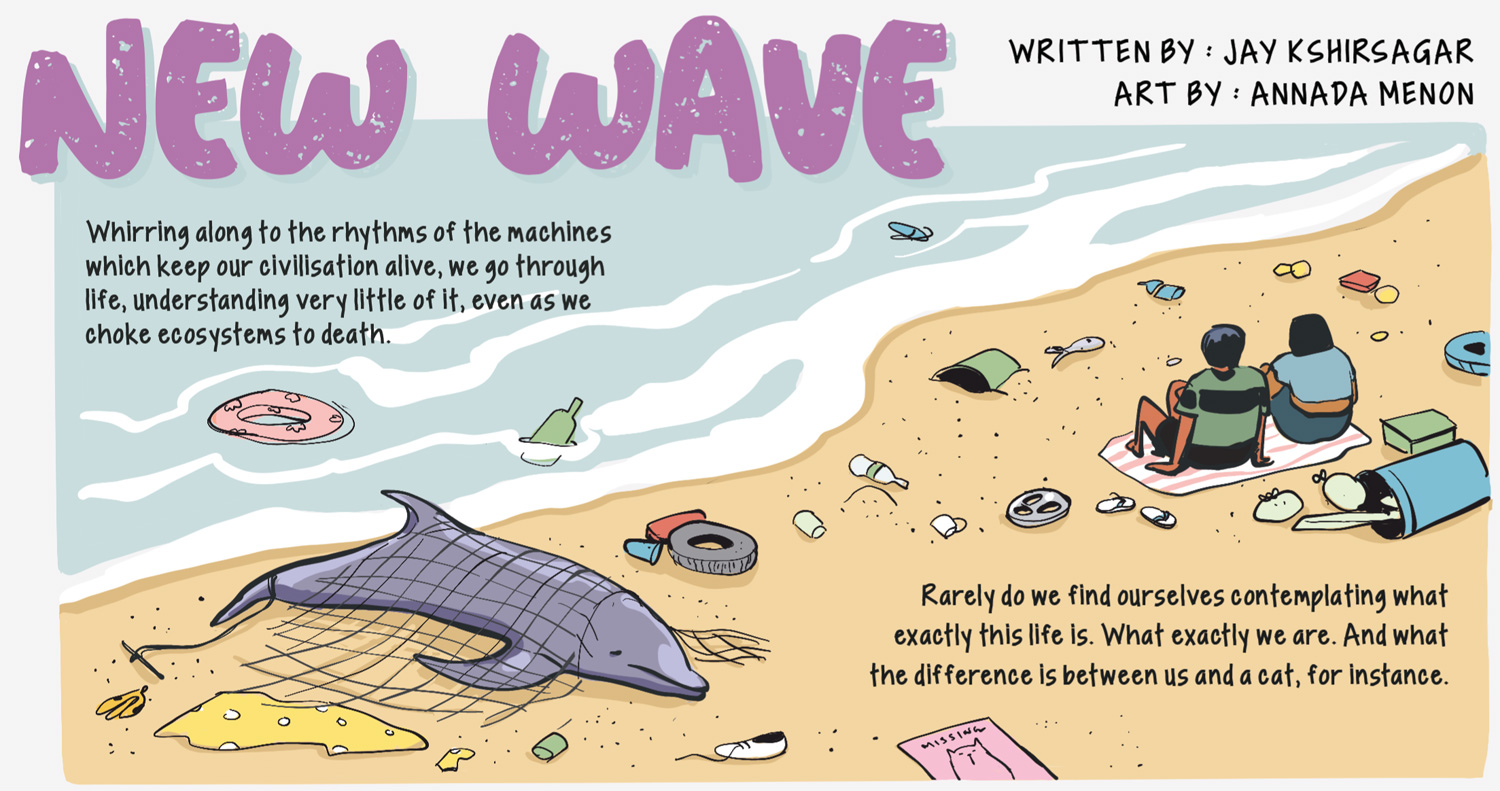
Vol 2 Issue 2 | July-Sept 2022
New Wave
Story by Jay Kshirsagar | Art by Annada Menon
This story is a fantastical imagining that involves cats, music, superstrings and the rejuvenation of our damaged earth.
The harmony of spheres
A single note contains infinite harmony in the form of overtones. Each note naturally contains its harmonic counterparts. Music is created by placing notes in time, which we call rhythm. The notes present different ‘colours’ by way of harmony, which is essentially a combination of notes. The ratios, or distances, between these notes determine the way the chords underlying the music feel. There seems to be a universal law determining how patterns are formed in music.
One such theory, put forward by Pythagoras, was known as ‘the harmony of spheres’. He pondered over whether the cycles of revolutions of planets around the sun had the same patterns as the cycles of notes and rhythms in a phrase of music. Combinations of colours, for instance, evoke similar moods as the combinations of notes when we compare their ratios (in terms of wavelengths) together. In this way, a natural, fractal order seems to prevail in our universe, creating stable patterns that are sustainable.
Polyrhythms and fractals in music (a must-watch, mind-bending video):
The concept of self-fulfilling loops:
Check out the book I am a strange loop by Douglas Hofstadter
Arguably a masterpiece on the topic of piecing together the interconnections among maths, music and visual art is the book Godel, Escher, Bach: an eternal golden braid by Douglas Hofstadter
Explore the concept of a fractal by typing “mandelbrot set” into your Google search bar and accessing the Google doodle that lets you explore the actual Mandelbrot set from your computer/phone. It’s very fascinating.

